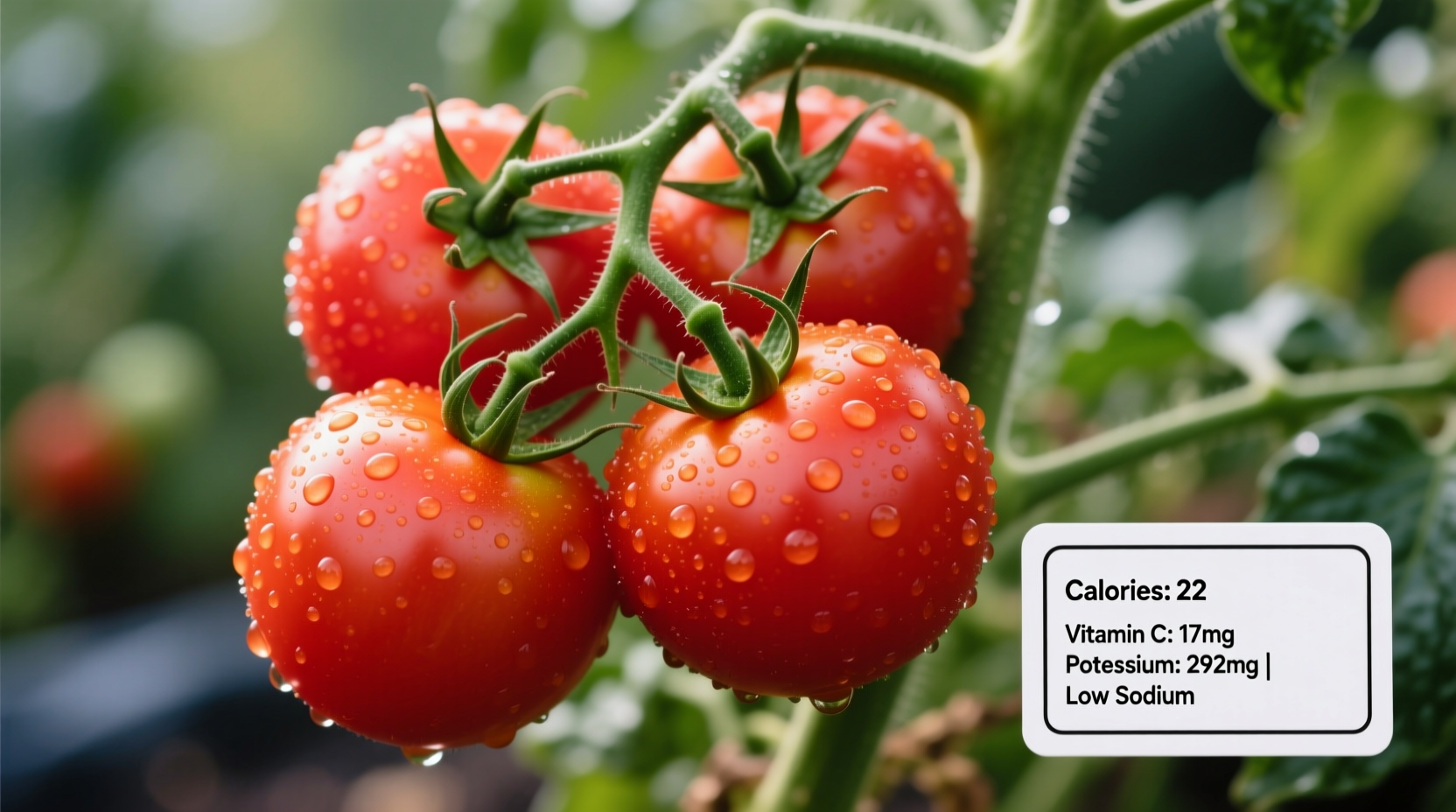Understanding the exact calorie content of everyday foods like tomatoes helps you make informed dietary choices without sacrificing flavor or nutrition. Whether you're tracking macros, managing weight, or simply curious about what you're eating, knowing these details puts you in control of your nutritional journey.
Tomato Calorie Counts by Size and Variety
The calorie content varies slightly depending on the tomato's size and variety. Here's a comprehensive breakdown based on USDA nutritional data:
| Tomato Type | Size/Weight | Calories | Carbohydrates |
|---|---|---|---|
| Medium raw tomato | 148g | 27 | 5.8g |
| Roma tomato | 62g | 11 | 2.5g |
| Cherry tomato | 12g each | 3 | 0.6g |
| Beefsteak tomato | 182g | 33 | 7.1g |
| Tomato juice (unsalted) | 248g (1 cup) | 41 | 8.9g |

Why Tomatoes Are a Nutritional Powerhouse
While their calorie count remains impressively low, tomatoes deliver remarkable nutritional value. According to the Centers for Disease Control and Prevention, tomatoes rank among the top vegetable sources of vitamin C in the American diet. A single medium tomato provides approximately 28% of your daily recommended vitamin C intake.
The National Institutes of Health highlights lycopene, the compound responsible for tomatoes' red color, as a powerful antioxidant with numerous health benefits. Research shows that lycopene absorption increases when tomatoes are cooked or processed, making tomato sauce and paste excellent sources despite their slightly higher calorie density per volume.
Practical Applications for Your Diet
Understanding how to incorporate tomatoes into your meal planning can help maximize their nutritional benefits while maintaining your calorie goals:
- Salad foundation: Use 1-2 medium tomatoes as the base for a salad (54-108 calories) and add protein sources for a complete meal
- Sauce alternative: Replace high-calorie cream sauces with fresh tomato sauce (about 70 calories per cup)
- Snacking: Ten cherry tomatoes contain only 30 calories while providing fiber and hydration
- Cooking tip: Pair tomatoes with healthy fats like olive oil to increase absorption of fat-soluble nutrients
Nutritional Context: Tomatoes in a Balanced Diet
The Dietary Guidelines for Americans consistently recommend increasing vegetable consumption, with tomatoes representing an excellent choice due to their low calorie density and high nutrient profile. When comparing tomatoes to other common vegetables:
- Tomatoes contain fewer calories than carrots (50 calories per 100g) and beets (44 calories per 100g)
- They provide similar calorie content to zucchini (17 calories per 100g) but with higher vitamin C
- Unlike starchy vegetables like potatoes (77 calories per 100g), tomatoes won't significantly impact your carbohydrate intake
Registered dietitians often recommend tomatoes for weight management because their high water content (95%) and fiber contribute to satiety without adding substantial calories. The Academy of Nutrition and Dietetics notes that non-starchy vegetables like tomatoes can be eaten in generous portions as part of calorie-controlled diets.
Common Misconceptions About Tomato Calories
Several myths persist about tomato nutrition that deserve clarification:
- "All tomato products have the same calorie count" - Processed tomato products vary significantly. While tomato paste concentrates nutrients and calories (74 calories per 100g), tomato juice contains about 18 calories per 100g.
- "Organic tomatoes have fewer calories" - USDA research confirms that organic and conventionally grown tomatoes have virtually identical nutritional profiles, including calorie content.
- "Tomatoes lose all nutrients when cooked" - While vitamin C decreases slightly with cooking, lycopene and other beneficial compounds become more bioavailable.
Maximizing Tomato Nutrition in Your Meals
To get the most nutritional value from tomatoes while maintaining awareness of calorie content:
- Combine raw tomatoes with healthy fats like avocado or olive oil to enhance absorption of fat-soluble nutrients
- Choose vine-ripened tomatoes when possible, as research from the University of California shows they contain higher lycopene levels
- Store tomatoes at room temperature until fully ripe, then refrigerate to preserve nutrients
- Use the entire tomato, including the nutrient-rich gel surrounding the seeds











 浙公网安备
33010002000092号
浙公网安备
33010002000092号 浙B2-20120091-4
浙B2-20120091-4